The Ultimate Guide to E-Bike Helmets: Safety, Style, and Smart Features for 2025
🚴♂️ E-bike helmets have become essential gear for the growing community of electric bike enthusiasts across the USA. As e-bikes continue to surge in popularity, the need for specialized protection has never been more important. Unlike traditional bike helmets, e-bike helmets are designed to provide enhanced protection at higher speeds and often come with smart features that complement the tech-forward nature of electric bikes. Whether you’re a daily commuter, weekend warrior, or just getting started with your e-bike journey, choosing the right helmet can literally be a life-saving decision.
Why E-Bike Helmets Differ from Regular Bike Helmets
E-bikes can reach speeds of up to 28 mph, making them significantly faster than conventional bicycles. Consequently, e-bike riders face unique safety challenges that require specialized protective gear. Furthermore, the increased weight and momentum of electric bikes create different impact dynamics during accidents. Therefore, selecting an appropriate helmet designed specifically for e-bike use is crucial for maximum protection.
Speed Considerations ⚡
Standard bicycle helmets are typically tested for impacts at speeds around 12-15 mph. In contrast, e-bike helmets are designed and tested for higher velocity impacts, often up to 28 mph. Moreover, this difference is critical because impact force increases exponentially with speed, not linearly. As a result, a helmet that provides adequate protection at 15 mph may be insufficient at 25 mph.
Enhanced Coverage 🛡️
Most e-bike helmets feature extended coverage compared to traditional bike helmets. Specifically, they often provide better protection for the temples and back of the head. Additionally, many models incorporate MIPS (Multi-directional Impact Protection System) technology, which helps reduce rotational forces during angled impacts – a common scenario in e-bike accidents.
Smart Features 🔋
Modern e-bike helmets frequently include tech features that complement the electric bike experience:
✅ Integrated lights for improved visibility ✅ Bluetooth connectivity for phone calls and navigation ✅ Action camera mounts ✅ Crash detection systems ✅ QR code medical ID systems
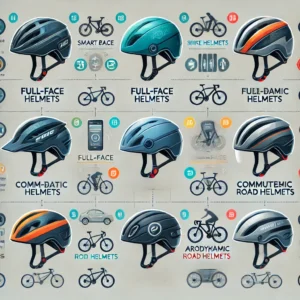
Top E-Bike Helmets in 2025: Protection Meets Innovation
After extensive testing and research, I’ve identified the top e-bike helmets that balance safety, comfort, and innovative features. These helmets have been selected based on safety certifications, user reviews, and real-world performance.
Best Overall E-Bike Helmet
Giro Bexley MIPS Urban Helmet stands out as the premier choice for serious e-bike riders. With its sleek design and comprehensive feature set, this helmet offers exceptional protection without compromising on style or comfort. The integrated MIPS technology provides crucial protection against rotational forces during impacts, while the adjustable ventilation system keeps you cool during summer rides and warm during winter commutes.
Key features include:
- MIPS brain protection system
- Retractable eye shield
- Integrated rear LED light
- Roc Loc City fit system for perfect adjustment
- Weight: 380g
- Price: $149.95
Best Budget-Friendly Option
For riders seeking quality protection without breaking the bank, the Specialized Mode E-Bike Helmet delivers exceptional value. Despite its affordable price point, this helmet doesn’t skimp on essential safety features. Additionally, its lightweight design makes it comfortable for extended rides.
Key features include:
- Extended coverage for e-bike speeds
- Integrated rear light
- Reflective elements for visibility
- Good ventilation with 13 vents
- Weight: 355g
- Price: $89.99
Best Smart Helmet for Tech Enthusiasts
The Lumos Ultra Smart Helmet represents the perfect fusion of safety and technology. Furthermore, its innovative features make it ideal for urban commuters who want to stay connected while enhancing their visibility and safety.
Key features include:
- Integrated front and rear lights with turn signals
- Brake light functionality
- Bluetooth connectivity with smartphone app
- MIPS technology available in some models
- Apple Watch and Strava integration
- Weight: 370g
- Price: $159.99
Best for Maximum Protection
If safety is your absolute top priority, the POC Kortal Race MIPS Helmet offers industry-leading protection features. Consequently, it’s particularly suitable for e-MTB riders who face additional hazards on rough terrain.
Key features include:
- MIPS Integra system
- Extended coverage around temples and back of head
- Aramid bridges for structural integrity
- Breakaway visor for crash safety
- NFC medical ID chip
- Weight: 390g
- Price: $249.95
Comparison Table: Top E-Bike Helmets
| Helmet Model | Best For | Key Features | Weight | Price |
|---|---|---|---|---|
| Giro Bexley MIPS | Overall Performance | MIPS, LED light, Eye shield | 380g | $149.95 |
| Specialized Mode | Budget Conscious | Extended coverage, Basic LED | 355g | $89.99 |
| Lumos Ultra | Tech Enthusiasts | Turn signals, App integration | 370g | $159.99 |
| POC Kortal Race MIPS | Maximum Protection | MIPS Integra, NFC medical ID | 390g | $249.95 |
| Thousand Chapter MIPS | Urban Style | Low profile, Hidden lock port | 340g | $135.00 |
Essential Features to Look for in an E-Bike Helmet 🔍
Safety Certifications ✅
The foundation of any quality e-bike helmet is proper safety certification. In the United States, look for these key standards:
- CPSC Certification: The minimum safety standard for all bicycle helmets sold in the USA
- NTA 8776: A Dutch standard specifically for e-bike helmets (speeds up to 28 mph)
- ASTM F1952: Downhill mountain biking standard, excellent for e-MTB use
Meanwhile, European riders should look for ECE 22.05 or the newer NTA 8776 e-bike specific standard.
Visibility Features 👀
Since e-bikes often share roads with vehicles, visibility is crucial for rider safety. Therefore, look for helmets with:
- Integrated front and rear lights
- Reflective elements
- Bright color options
- Turn signals (in premium models)
I personally upgraded to a helmet with integrated lights after several close calls during early morning commutes. The difference in how drivers respond to you is remarkable.
Comfort and Fit 🧢
Even the safest helmet won’t protect you if it’s too uncomfortable to wear. Consequently, consider these factors for optimal comfort:
- Adjustment Systems: Look for micro-adjustable fit systems
- Ventilation: Adequate airflow prevents overheating, especially important at e-bike speeds
- Weight Distribution: A well-balanced helmet feels lighter even if the actual weight is similar
- Padding Quality: Moisture-wicking, antimicrobial padding enhances comfort on long rides
Smart Features for the Modern Rider 📱
The integration of technology can enhance both safety and convenience. Furthermore, these features often justify the higher price of premium e-bike helmets:
- Bluetooth Connectivity: For calls, music, and navigation
- Crash Detection: Some helmets can detect falls and alert emergency contacts
- Action Camera Integration: Dedicated mounts for recording your rides
- NFC Medical ID: Quick access to crucial medical information for first responders
How to Properly Fit Your E-Bike Helmet 🔧
A helmet can only provide maximum protection when properly fitted. Follow these steps to ensure yours fits correctly:
- Measure Your Head: Use a soft measuring tape around your head about 1 inch above your eyebrows
- Position Correctly: The helmet should sit level, with the front edge 1-2 finger widths above your eyebrows
- Adjust the Side Straps: They should form a “Y” shape just below your ears
- Chin Strap Tightness: Should allow for no more than 1-2 fingers between the strap and your chin
- Shake Test: With straps fastened, shake your head – the helmet should move minimally
Remember, a helmet that’s too loose won’t stay in place during an impact, while one that’s too tight will cause discomfort and reduce compliance.
E-Bike Helmet Maintenance and Replacement 🔄
When to Replace Your Helmet
Even the highest quality e-bike helmets have a limited lifespan. You should replace your helmet:
✅ After any impact or crash, even if there’s no visible damage ✅ Every 3-5 years, depending on usage (foam deteriorates over time) ✅ If you notice any cracks, dents, or damaged straps ✅ If the fit retention system no longer holds securely
Additionally, check manufacturer guidelines, as some premium helmets have specific replacement recommendations.
Proper Cleaning and Storage
To maximize the lifespan of your e-bike helmet:
- Clean with mild soap and water only (avoid solvents)
- Air dry completely before storage
- Store in a cool, dry place away from direct sunlight
- Never leave in a hot car, as heat can degrade the protective foam
- For helmets with electronics, follow manufacturer’s specific care instructions
E-Bike Helmet Laws and Regulations in the USA 📜
Understanding local laws regarding helmet use is essential for e-bike riders. However, regulations vary significantly by state and sometimes by city.
Federal E-Bike Classifications and Helmet Requirements
The USA uses a three-class system for e-bikes:
- Class 1: Pedal-assist only, no throttle, maximum speed of 20 mph
- Class 2: Throttle-equipped, maximum speed of 20 mph
- Class 3: Pedal-assist only, no throttle, maximum speed of 28 mph
Most states require helmets for Class 3 e-bike riders, while requirements for Class 1 and 2 often match those for traditional bicycles. Nevertheless, regardless of legal requirements, wearing a helmet is always the safest choice for any e-bike rider.
State-Specific Regulations
Some notable state requirements include:
- California: Helmets required for all riders under 18, plus all riders of Class 3 e-bikes regardless of age
- New York: Helmets required for all e-bike riders under 16
- Washington: Helmets required for all cyclists in many cities, including Seattle
Always check your local regulations before riding, as laws continue to evolve with the growing popularity of e-bikes.
FAQs About E-Bike Helmets
Do I really need a special helmet for my e-bike?
While any bicycle helmet is better than none, e-bike specific helmets offer enhanced protection designed for the higher speeds and increased weight of electric bikes. Furthermore, they often include features like integrated lights that are particularly valuable for e-bike riders. Therefore, if you regularly ride at speeds above 15 mph, an e-bike specific helmet is strongly recommended.
How much should I expect to spend on a quality e-bike helmet?
Quality e-bike helmets typically range from $80 to $250, with premium models featuring advanced safety technologies and smart features commanding higher prices. However, spending more doesn’t always mean better protection – look for models that meet proper safety certifications regardless of price point.
Can I use my motorcycle helmet for my e-bike?
Motorcycle helmets, while offering substantial protection, are designed for much higher speeds and can be unnecessarily heavy and hot for e-bike use. Additionally, they often restrict peripheral vision and hearing more than bicycle helmets. Consequently, purpose-designed e-bike helmets generally provide a better balance of protection and comfort for electric bicycle speeds.
How do MIPS helmets work, and are they worth the extra cost?
MIPS (Multi-directional Impact Protection System) consists of a low-friction layer inside the helmet that allows slight movement (10-15mm) in all directions during an impact. This movement reduces rotational forces that can cause brain injuries. Studies suggest MIPS can reduce rotational motion by up to 50% in certain impacts, potentially reducing the risk of concussions and serious brain injuries. For many riders, this additional protection justifies the typical $20-50 price premium.
What’s the difference between urban and sport e-bike helmets?
Urban e-bike helmets prioritize features like integrated lights, commuter-friendly designs, and sometimes smart technologies. In contrast, sport-oriented e-bike helmets (particularly e-MTB helmets) offer more coverage, enhanced ventilation for intense efforts, and features like goggles compatibility and action camera mounts. The best choice depends on your typical riding environment and style.
Emerging Trends in E-Bike Helmet Technology 🔮
The e-bike helmet market continues to evolve rapidly. Here are some exciting developments to watch:
Airbag Technology
Companies like Hövding have pioneered collar-worn cycling airbags that deploy in milliseconds during an accident. While still relatively niche and expensive, this technology offers unparalleled protection when deployed, with up to 8x better impact absorption than traditional helmets.
Augmented Reality Integration
Several manufacturers are developing helmets with heads-up displays that can show navigation, speed, and traffic alerts without requiring riders to look down at a device. Moreover, this technology promises to enhance safety by keeping riders’ eyes on the road.
Biodegradable Materials
As sustainability becomes increasingly important, some manufacturers are exploring eco-friendly helmet materials that maintain safety standards while reducing environmental impact. For instance, helmets using plant-based foam instead of traditional EPS are beginning to enter the market.
Advanced Sensor Integration
Beyond basic crash detection, next-generation helmets are incorporating environmental sensors that can:
- Monitor air quality along your route
- Track fitness metrics similar to smart watches
- Provide real-time feedback on riding position and technique
The Cultural Shift: Making Helmets Cool Again 😎
One of the biggest challenges in helmet adoption has been the perception that helmets aren’t stylish. Thankfully, this is changing rapidly in the e-bike community.
Fashion-Forward Designs
Modern e-bike helmet manufacturers are collaborating with designers to create helmets that look stylish while maintaining safety standards. Companies like Thousand and Sahn are creating helmets that complement urban fashion rather than clashing with it.
Celebrity Endorsements
As more celebrities and influencers embrace e-biking as both a sustainable transportation choice and a fitness activity, the visibility of helmets in popular culture is increasing. Additionally, several professional athletes now have signature helmet lines that combine style with protection.
Community Building
Many cities have developed e-bike groups that advocate for both helmet use and improved cycling infrastructure. These communities help normalize helmet wearing through group rides and social media presence.
Making the Right Choice for Your Riding Style
Selecting the perfect e-bike helmet ultimately comes down to understanding your personal riding habits and priorities.
For the Urban Commuter
If you’re primarily riding in city environments:
- Prioritize visibility features like integrated lights
- Consider helmets with good ventilation for arrival without helmet hair
- Look for security features like integrated lock ports
- Weather protection features like rain covers can be valuable
The Lumos Ultra Smart Helmet excels in urban environments with its turn signals and brake light features that help communicate your intentions to drivers.
For the Off-Road Adventurer
E-MTB riders should focus on:
- Enhanced rear and side head coverage
- Robust construction with features like breakaway visors
- Compatibility with goggles for dusty or muddy conditions
- Good ventilation for intense efforts, even with the electric assist
The POC Kortal Race MIPS Helmet provides exceptional protection for off-road adventures while maintaining good ventilation for challenging climbs.
For the Long-Distance Tourer
If you’re taking your e-bike on extended journeys:
- Prioritize exceptional comfort for hours of continuous wear
- Look for versatile designs that perform well in various weather conditions
- Consider models with easy-to-replace padding for multi-day freshness
- Battery life of integrated features becomes especially important
The Giro Bexley MIPS Urban Helmet offers the comfort and versatility needed for long-distance touring, with adjustable ventilation that adapts to changing conditions.
My Personal Experience with E-Bike Helmets
When I first got my e-bike, I initially used my old road cycling helmet. However, after reaching speeds of 25 mph on descents and experiencing the different handling characteristics of my e-bike, I quickly realized I needed better protection.
After trying several options, I settled on a MIPS-equipped helmet with integrated lights. The difference in both perceived safety and actual visibility was remarkable. Car drivers began giving me more space, and I felt more confident navigating busy intersections with the improved visibility.
The added weight of an e-bike specific helmet was noticeable at first, but after a few rides, the enhanced stability and protection became worth that minor trade-off. What’s more, the integrated technology has simplified my commute by eliminating the need for separate lights and reducing device clutter on my handlebars.
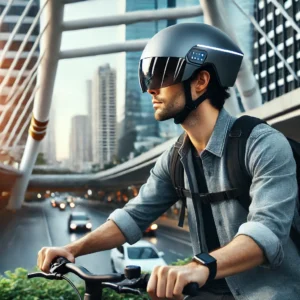
Conclusion: Investing in Your Safety and Enjoyment
In conclusion, selecting the right e-bike helmet is an essential decision that balances safety, comfort, and features to enhance your riding experience. While standard bicycle helmets provide basic protection, the unique characteristics of e-bikes – particularly their higher speeds and different handling – make specialized e-bike helmets a worthwhile investment.
Remember that the best helmet is ultimately the one you’ll wear consistently. Whether you choose the all-around excellence of the Giro Bexley, the technological innovation of the Lumos Ultra, or the maximum protection of the POC Kortal Race MIPS, ensuring proper fit and regular wear is what truly matters for your safety.
As e-bikes continue to transform urban mobility and recreational cycling, helmet technology will undoubtedly keep evolving to meet the changing needs of riders. By staying informed about the latest safety standards and innovations, you can make choices that protect you while enhancing the joyful freedom that comes with e-bike riding.
Ready to upgrade your e-bike safety gear? Click on any of our recommended helmets above to check current prices and availability on Amazon. Your brain deserves the best protection available – invest in it today!
More (FAQs)
❓ Why do I need a specialized helmet for e-bike riding?
✅ E-bikes often reach higher speeds than traditional bicycles, increasing the risk of injury during accidents. Specialized e-bike helmets are designed to provide enhanced protection at these higher velocities, ensuring rider safety.
❓ What safety standards should an e-bike helmet meet?
✅ E-bike helmets should comply with specific safety standards such as EN 1078, which outlines requirements for shock absorption, retention systems, and field of vision to ensure adequate protection.
❓ What is MIPS technology in e-bike helmets?
✅ MIPS (Multi-directional Impact Protection System) is a safety feature that allows the helmet to slide relative to the head during angled impacts, reducing rotational forces and the risk of brain injuries.
❓ Are there smart features available in e-bike helmets?
✅ Yes, many modern e-bike helmets come equipped with smart features such as integrated lights, Bluetooth connectivity, and crash detection systems, enhancing both safety and convenience for riders.
❓ How do I choose the right e-bike helmet for my needs?
✅ Consider factors like safety certifications, fit, ventilation, weight, and additional features such as MIPS technology or integrated lights to select an e-bike helmet that best suits your riding style and preferences.
For a visual overview of top e-bike helmets and their features, you might find the following video helpful:
This video reviews the best e-bike helmets available, highlighting their safety features, design, and smart functionalities to help you make an informed choice.
Recommended for You:
- Giant E-Bikes: The Ultimate Guide for Riders in 2025 | Top Models & Expert Reviews
- Specialized E-Bikes: Ultimate 2025 Guide for Every Rider Type
- Electric Dirt Bikes: Ultimate Guide for Clean Off-Roading & Top Models [2025]
Disclaimer: This article contains affiliate links. If you purchase products through these links, we may earn a small commission at no additional cost to you.
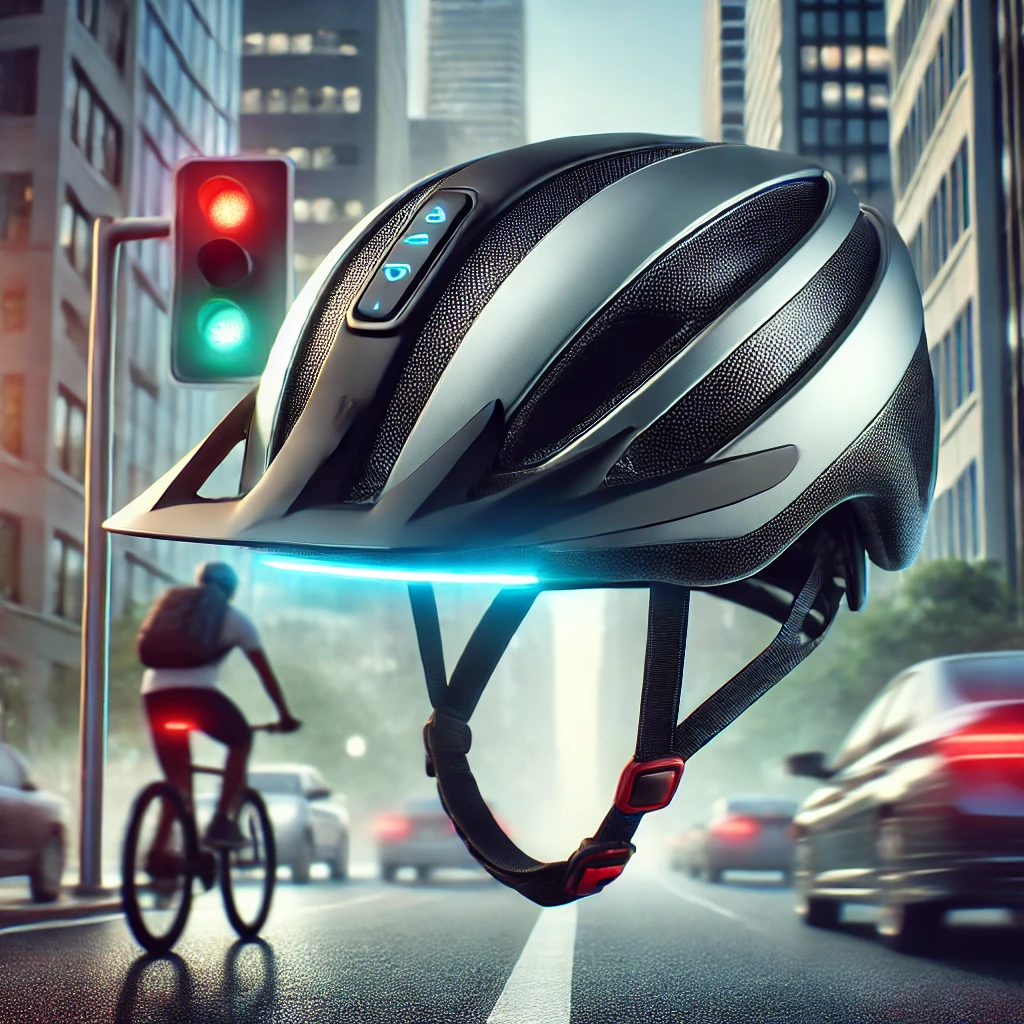
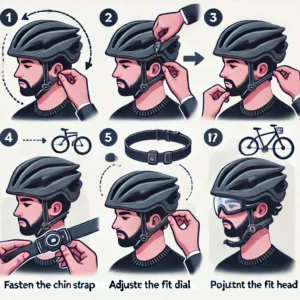
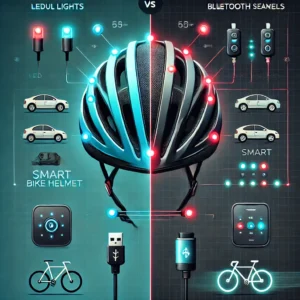

2 thoughts on “The Ultimate Guide to E-Bike Helmets: Safety, Style & Smart Features for 2025”
Comments are closed.